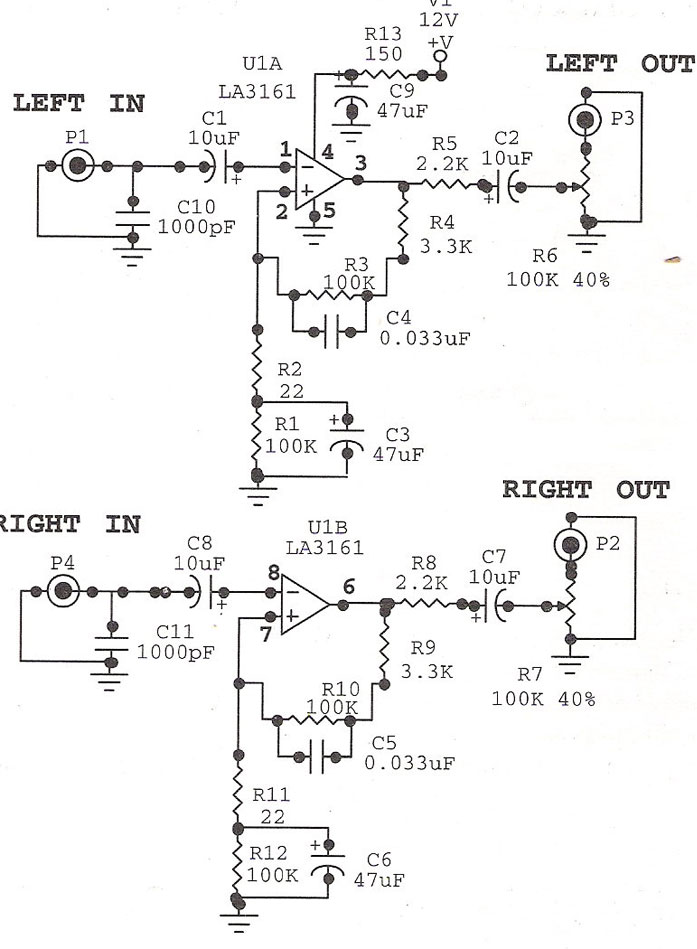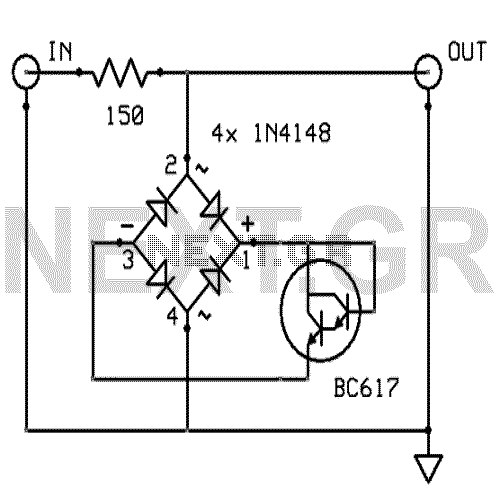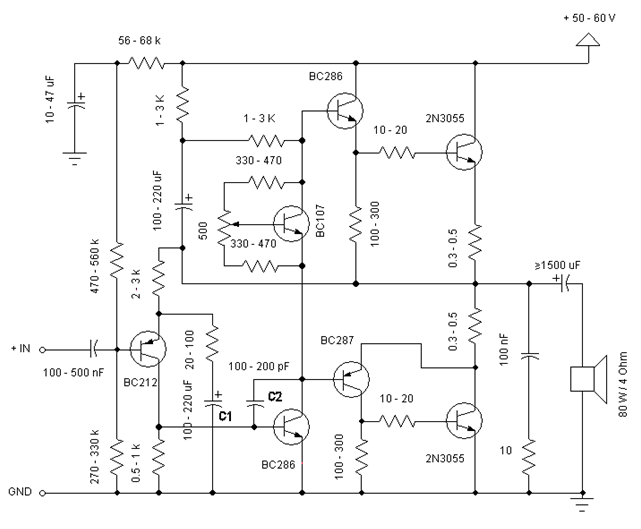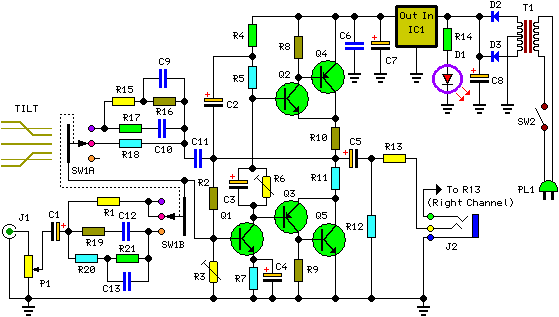
A Direct-Coupled Amplifier with Cathode Follower by Raymond H. Bates
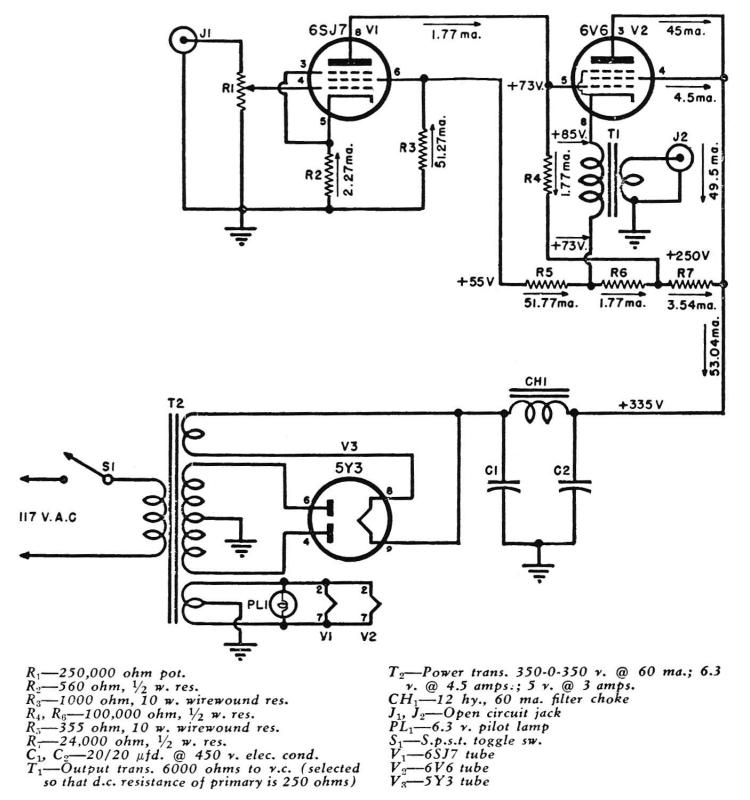
A Direct-Coupled 6V6 Tube Amplifier with Cathode Follower by Raymond H. Bates from Radio & Television News magazine, November 1949.
The Direct-Coupled 6V6 Tube Amplifier is designed to utilize a 6V6 vacuum tube, which is known for its warm sound and high fidelity in audio amplification. This amplifier incorporates a cathode follower stage, which serves to buffer the output of the amplifier while maintaining a high input impedance and low output impedance. The direct coupling between stages eliminates the need for coupling capacitors, allowing for a more seamless signal transfer and improved frequency response.
The circuit typically consists of a power supply providing the necessary high voltage for the 6V6 tube, along with a filament supply for heating the tube. The input stage may include a preamplifier section, which is often based on another tube, such as a 12AX7, to provide initial signal amplification. The output stage, featuring the 6V6, is responsible for driving the speakers, delivering rich audio output.
The cathode follower configuration is implemented to drive the load efficiently, ensuring that the output signal retains its integrity without significant distortion. This configuration also allows for better voltage swing capabilities, which is crucial for audio applications.
Overall, the Direct-Coupled 6V6 Tube Amplifier with Cathode Follower is a classic design that exemplifies the advantages of tube technology in audio amplification, offering both aesthetic appeal and high-quality sound reproduction. Its design principles remain relevant in modern audio applications, reflecting the enduring legacy of vacuum tube amplifiers.A Direct-Coupled 6V6 Tube Amplifier with Cathode Follower by Raymond H. Bates from Radio & Television News magazine November 1949 🔗 External reference
The Direct-Coupled 6V6 Tube Amplifier is designed to utilize a 6V6 vacuum tube, which is known for its warm sound and high fidelity in audio amplification. This amplifier incorporates a cathode follower stage, which serves to buffer the output of the amplifier while maintaining a high input impedance and low output impedance. The direct coupling between stages eliminates the need for coupling capacitors, allowing for a more seamless signal transfer and improved frequency response.
The circuit typically consists of a power supply providing the necessary high voltage for the 6V6 tube, along with a filament supply for heating the tube. The input stage may include a preamplifier section, which is often based on another tube, such as a 12AX7, to provide initial signal amplification. The output stage, featuring the 6V6, is responsible for driving the speakers, delivering rich audio output.
The cathode follower configuration is implemented to drive the load efficiently, ensuring that the output signal retains its integrity without significant distortion. This configuration also allows for better voltage swing capabilities, which is crucial for audio applications.
Overall, the Direct-Coupled 6V6 Tube Amplifier with Cathode Follower is a classic design that exemplifies the advantages of tube technology in audio amplification, offering both aesthetic appeal and high-quality sound reproduction. Its design principles remain relevant in modern audio applications, reflecting the enduring legacy of vacuum tube amplifiers.A Direct-Coupled 6V6 Tube Amplifier with Cathode Follower by Raymond H. Bates from Radio & Television News magazine November 1949 🔗 External reference

